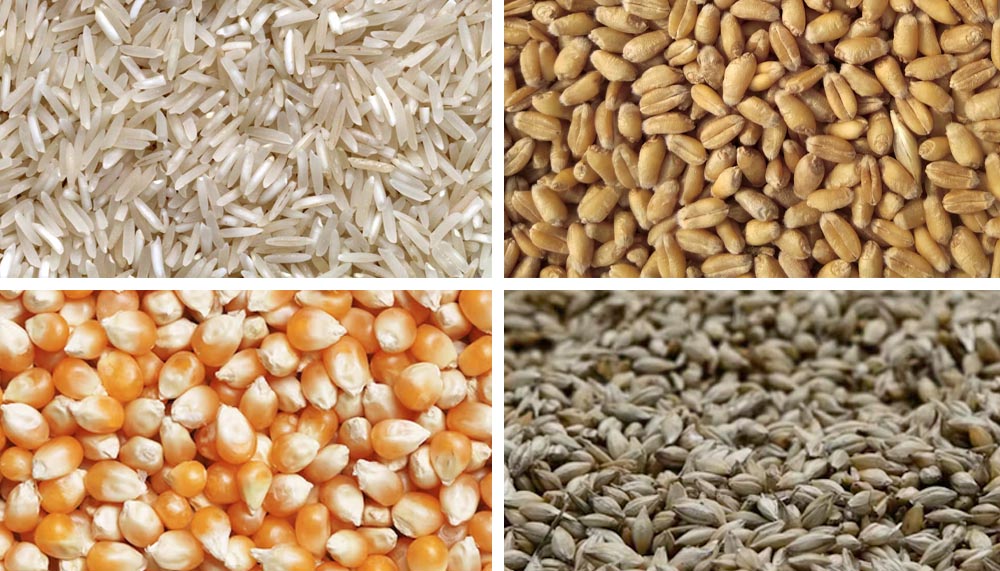Rice Sorting Machine
Wheat Sorting Machine
Corn Sorting Machine
Barley Sorting Machine
Oats Sorting Machine
Quinoa Sorting Machine
Maize Sorting Machine
Basmati Rice Sorting Machine
Black Rice Sorting Machine
Wild Rice Sorting Machine
Buckwheat Sorting Machine
Sorghum Sorting Machine
Rye Sorting Machine
Triticale Sorting Machine
Millet Sorting Machine
Ancient Grains Sorting Machine
Jasmine Rice Sorting Machine
What is Grains Sorting
Grains sorting refers to the advanced process of separating various types of grains based on their color, size, shape, and other optical characteristics using high-precision color sorters. This technology ensures that only high-quality grains free from defects, impurities, or discolored particles make it to the final product. With the growing demand for purity in agricultural products, grain sorting has become an essential step in food processing industries.
Modern grain sorting solutions cater to a wide variety of crops including rice, wheat, corn, barley, oats, quinoa, and even ancient grains like millet and sorghum. These machines help farmers and food processors maintain consistency, improve yield, and meet international quality standards. Whether it's removing foreign materials or sorting grains by grade, automated sorting systems provide accuracy that manual methods simply cannot match.

How Grains Sorting Works
Grain sorting machines utilize high-resolution CCD optical sensors and advanced imaging technology to analyze each grain as it passes through the system. The sensors capture detailed color information, detecting even the slightest variations in hue or texture. When an undesirable grain or impurity is identified, the machine triggers a high-speed air ejection system to remove it from the production line.
The sorting process begins with feeding grains into the machine, where they are evenly distributed to ensure each particle is inspected individually. Advanced algorithms process the images in real-time, distinguishing between acceptable and defective grains with remarkable precision. This ensures that only the highest quality grains proceed to packaging, significantly reducing waste and improving overall product value.
Core Features and Benefits of Grains Sorting
Modern grain sorting solutions offer unparalleled accuracy in detecting and removing defects, discolored grains, and foreign materials. These machines can process thousands of grains per second, significantly outperforming manual sorting in both speed and consistency. The ability to customize sorting parameters allows processors to adapt the machine for different grain types and quality requirements, making it a versatile solution for diverse agricultural products.
Beyond quality control, grain sorting machines contribute to food safety by eliminating potentially harmful contaminants. They also help reduce labor costs while increasing throughput, providing a quick return on investment for processing facilities. The non-destructive nature of optical sorting preserves grain quality, ensuring that nutritional value and appearance remain intact throughout the process.
Technical Specifications of Grain Sorting Machines
High-performance grain sorters typically feature full-color CCD cameras with resolutions capable of detecting minute defects as small as 0.1mm. Processing capacities range from 1 to 20 tons per hour depending on the model and grain type, with ejection accuracy rates exceeding 99.9%. These machines often incorporate smart learning algorithms that improve detection accuracy over time as they process more material.
Modern sorters come equipped with user-friendly touchscreen interfaces for easy operation and parameter adjustment. Many models feature dual-camera systems for simultaneous inspection from multiple angles, ensuring comprehensive quality control. Energy efficiency is another key consideration, with advanced models consuming minimal power while delivering maximum sorting performance.
Applications of Grain Sorting Technology
Grain sorting technology finds application across numerous agricultural sectors, from large-scale rice mills to specialty grain processors. It's particularly valuable for premium products like Basmati rice, Jasmine rice, and ancient grains where appearance and purity significantly impact market value. The technology also plays a crucial role in organic grain processing, where chemical treatments aren't an option for quality improvement.
Beyond food production, grain sorters are used in seed processing to ensure high germination rates and in animal feed production to remove potentially harmful materials. The adaptability of these machines allows them to handle everything from common staples like wheat and corn to more specialized crops like quinoa and buckwheat with equal efficiency.
Buying Guide
When selecting a grain sorting machine, consider the specific types of grains you'll be processing and their typical defect profiles. Processing capacity requirements should match your production volume, while machine flexibility becomes important if you handle multiple grain varieties. Look for machines with easy-to-clean designs and robust construction suitable for food processing environments.
Advanced features like cloud connectivity for performance monitoring and remote diagnostics can provide long-term value. Consider the availability of local service support and the machine's compatibility with your existing processing line. Many manufacturers offer demonstration units or trial periods to help evaluate a machine's performance with your specific grain products.
Maintenance Guide
Regular maintenance is crucial for optimal grain sorter performance. Daily cleaning removes dust and grain residues that could affect optical sensors, while periodic calibration ensures sorting accuracy remains consistent. Air filters and ejection nozzles require particular attention as clogging can significantly impact sorting efficiency.
Scheduled professional servicing helps identify wear components before they fail and maintains the machine's precision over time. Keeping detailed maintenance records can help predict when parts need replacement and ensure uninterrupted operation. Proper storage during off-seasons protects sensitive components and extends the machine's operational lifespan.